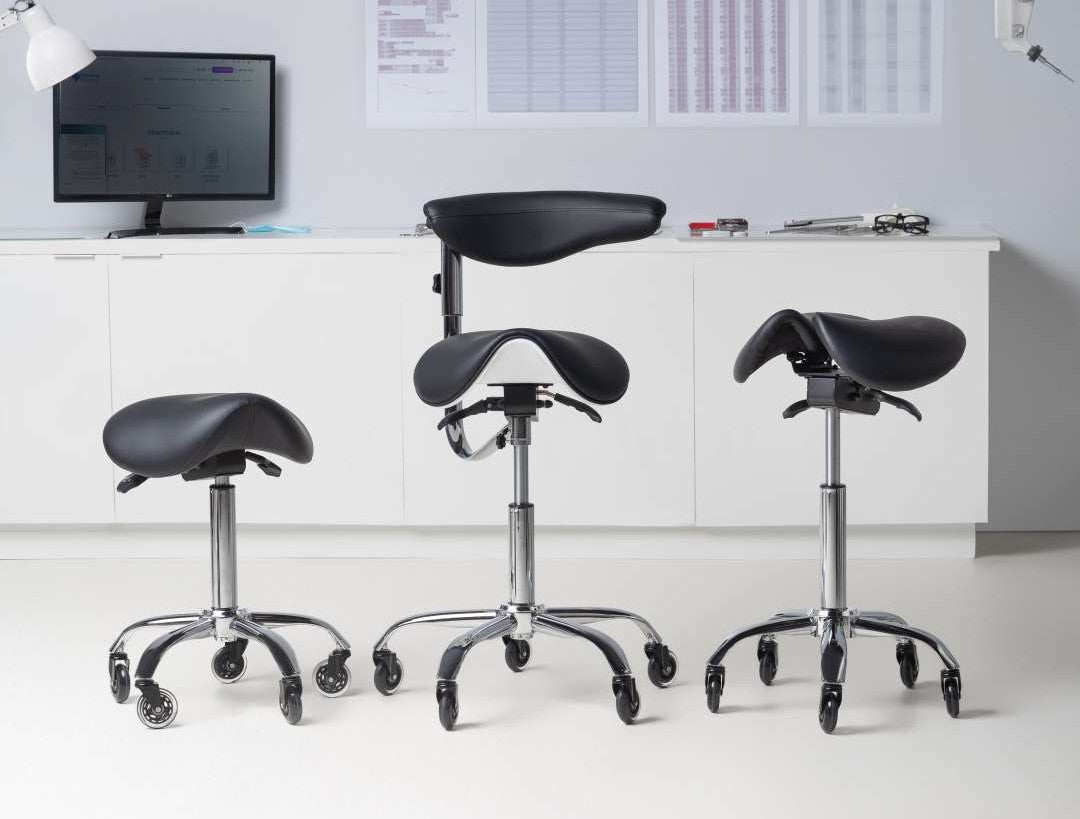

· By Trevor Horne
What to Look for When Buying a Saddle Stool
Choosing the right saddle stool can make a big difference in your comfort and productivity, especially if you spend long hours at work. These stools are popular in medical settings because they support good posture and reduce back pain. Understanding the key features of a high-quality saddle stool will help you make an informed decision that benefits your health and work efficiency.
Importance of Ergonomics in Saddle Stools
Ergonomics is a crucial aspect to consider when buying a saddle stool. For medical professionals, proper ergonomics can significantly reduce the risk of developing back pain and other musculoskeletal issues. The design of a saddle stool aims to support the natural curve of your spine, promoting a healthy posture. When your spine is aligned correctly, it reduces the strain on your back muscles and joints.
Sitting on a well-designed saddle stool distributes your weight evenly, which helps to prevent pressure points from forming. This is especially important during long procedures or consultations when you're sitting for extended periods. An ergonomic saddle stool encourages an open hip angle, which improves circulation and reduces the likelihood of stiffness and discomfort.
Besides reducing pain, ergonomic stools can enhance your productivity. When you're comfortable, you can focus better on your tasks without being distracted by aches and pains. An ergonomic saddle stool allows you to move freely and reach necessary tools without straining, making it easier to maintain your workflow throughout the day.
Key Adjustable Features to Consider
Adjustable features are essential in a saddle stool to ensure it meets your specific needs. Height adjustment is one of the most important features to look for. Being able to set the stool at the correct height ensures your hips are higher than your knees, which helps maintain an open hip angle and proper spine alignment.
Another useful feature is the ability to adjust the tilt of the seat. A tilting seat can help you fine-tune your sitting position, distributing your weight evenly across the seat and reducing pressure on your lower back. This is especially helpful for tasks that require you to lean forward often.
Swivel and mobility are also important. Many saddle stools come with wheels that allow you to move around your workspace effortlessly. This mobility feature helps you stay flexible and reach different areas without getting up, saving time and effort. Additionally, stools that swivel make it easier to turn and reach for instruments or tools, which is vital in a fast-paced medical environment.
Material and Durability: What to Watch For
The material and durability of your saddle stool are key factors that will affect its longevity and your comfort. A high-quality saddle stool should be made from sturdy and durable materials that can withstand daily use. Look for stools with frames made from metals like steel or aluminum, which provide strength and stability.
The seat cushion material is also important. Opt for saddle stools with high-density foam padding that retains its shape over time. Vinyl and leather are common choices for seat covers because they are easy to clean and resistant to wear and tear. These materials also offer a professional appearance suitable for medical environments.
Check the quality of the wheels and casters if your stool has them. Good wheels should glide smoothly over various floor surfaces without getting stuck. Durable wheels can handle frequent movement and reduce the risk of damage to both the stool and the floor. Keep an eye out for stools that come with warranties, as this can give you extra peace of mind regarding the durability of your purchase.
User Reviews and Recommendations: Making an Informed Choice
Reading user reviews and getting recommendations can help you choose the best saddle stool. Reviews often provide real-world insights into the stool's comfort, durability, and ease of use. Pay attention to feedback from other medical professionals, as their needs and experiences will be similar to yours.
Look for reviews that mention key features you care about, such as ergonomic support, adjustability, and material quality. Users often point out both the strengths and weaknesses of a product, giving you a balanced view. Checking ratings and comments on multiple platforms can help you get a comprehensive understanding of the stool's performance.
Talking to colleagues and peers can also be valuable. They can share their personal experiences and offer practical advice on what works best in a medical setting. Recommendations from trusted sources can guide you toward a reliable and suitable saddle stool that meets your needs.
Conclusion
Selecting the right saddle stool is essential for maintaining comfort and efficiency during long work hours. Focusing on ergonomics ensures that the stool supports your spine and reduces the risk of back pain. Key adjustable features let you customize the stool to fit your body and work style, adding to your overall comfort.
For top-notch saddle stools and other medical equipment, look no further than ProNorth Medical to explore our range of ergonomic solutions designed to meet your needs. Shop now!